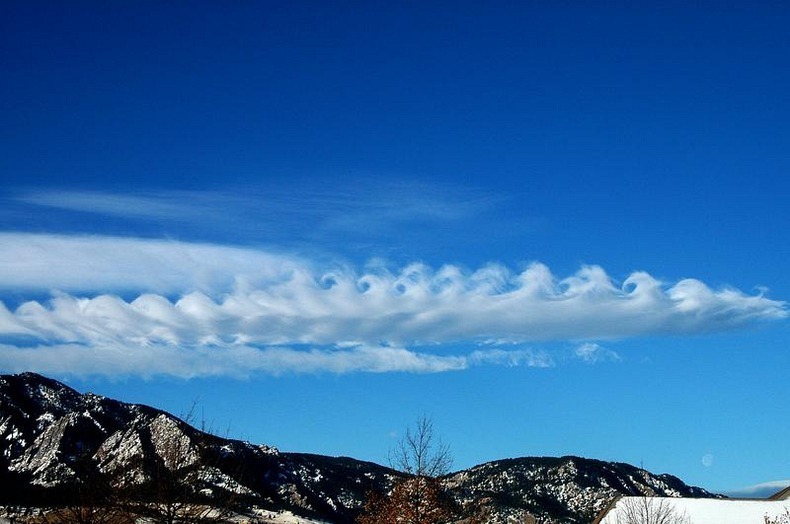Kelvin-Helmholtz clouds resemble waves breaking in the ocean. These clouds are formed between two layers of air with different densities and traveling at different speeds. If a warm, less dense layer of air exists over a layer of colder, denser air, and the wind shear across the two layers is strong enough, eddies will develop along the boundary. Evaporation and condensation of the eddies render them visible as wave shaped clouds.
The cloud is named after Lord Kelvin and Hermann von Helmholtz who studied the dynamics of two fluids of different densities when a small disturbance, such as a wave, was introduced at the boundary connecting the fluids. The Kelvin–Helmholtz instability occurs not only in clouds but also in the ocean, Saturn's bands, Jupiter's Red Spot, and the sun's corona.

Also see:























Hi. My name is Giselle Goloy and I took that photo at the very top of this article. Please link back credits to me. Thank you. Cheers.
ReplyDeletePlease provide the link to your photo.
DeleteHi,
DeleteI would like to use the top photo in my thesis, if is this okay, how should it be cited?
G
The 6th photo is mine. Thanks for linking to my page. It was a little weird seeing this as a referrer.
ReplyDelete